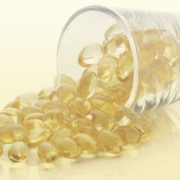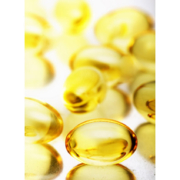Reality Check: Vitamin D
Let me be clear. You should know how much of every dietary supplement you take and why you take it. If you exceed the amounts recommended on the label, you should also know why. But the case of the 89-year-old man who died because of an assumed excess vitamin D intake shouldn’t change a reasonable intake of vitamin D for anybody. Let’s take a look at what we don’t know.
Unanswered Questions
How much vitamin D was he taking? There is no indication that he took more than the upper limit. The assumption was that he was taking a very high amount, but wouldn’t there be receipts from pharmacies or groceries where he bought the supplements to deduce an estimate of how much he took?
Why did he decide to take more? Was he not feeling well? Someone with chronic heart disease and kidney disease might not feel all that great.
What medications was he taking? Was he taking those at the right time in the proper quantities?
One more: How do we know how he processed vitamin D? The assumption was that he mega-dosed on vitamin D, but what if he simply couldn’t process it well at 89?
About Exceeding That Upper Limit
For adults, the Tolerable Upper Limit (TUL) is listed at 4,000 IU (100 mcg), but that includes a safety factor of 6,000 IU per day. There were no observable events in the literature even at 10,000 IU per day, but to be safe, it was set at 4,000 IU.
Also, I’ve never seen a vitamin D supplement without a recommended amount to take. On the other hand, I’ve never seen a warning about consuming excess pharmaceuticals on the prescription bottles either. Buried in the flyer that comes with the prescription, yes, but not on the label.
The Bottom Line
Whether you’re 19 or 89, you should base your vitamin D intake on a vitamin D blood test. Vitamin D is not innocuous; take too much and it can be harmful. But there is nothing to fear in taking it in reasonable amounts to benefit your bones and your immune system. Physicians have prescribed 50,000 IU once a week for months to help people who need to raise their serum 25-hydroxyvitamin D (25OHD) levels. If it were not safe, it wouldn’t be used in that fashion. It also means you shouldn’t take it at a high level without guidance.
Again, base your vitamin D intake on the blood test and know why you take the amount of vitamin D you take. No reason to get extreme; just be reasonable.
The special pricing on the Real-Life Detox ebook ends tomorrow. The clocks change tonight, so it’s a good time to change your body with some spring cleaning.
What are you prepared to do today?
Dr. Chet
Reference: Institute of Medicine (US) Committee to Review Dietary Reference Intakes for Vitamin D and Calcium; Washington (DC): National Academies Press (US); 2011.









